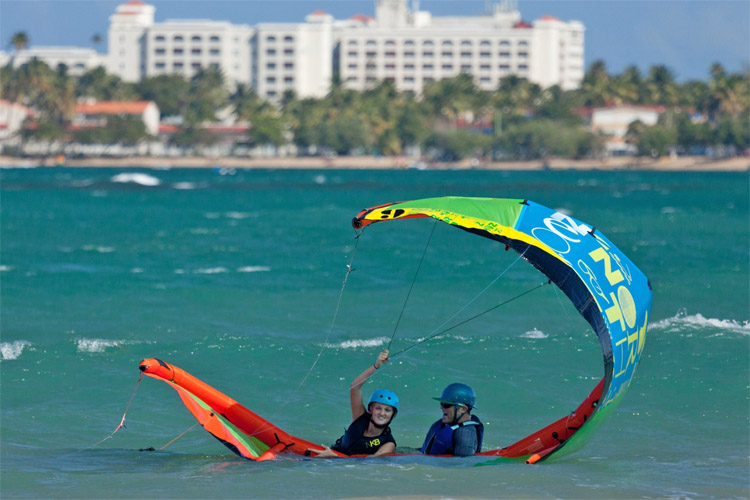Rescuing a kiteboarder involves dealing with a lot of equipment. And, many times, rescuers don't know how to recover kite gear.
If you're a lifeguard, a member of a lifeboat team, a yachtsman, or even a motorboat enthusiast, and you find someone in trouble, you should be able to get the rider out of the water along with his sports gear.
A rescuer must first know the equipment a kiteboarder uses while riding the winds and the waves.
Kite Gear
The basic kiting gear includes:
- Twin-tip board, a foil board, or a surfboard;
- Kite;
- Kite bar with lines;
- Harness;
- Helmet;
- Impact vest;
Modern kiteboarding equipment comes with a safety system, i.e., a quick-release mechanism that drastically reduces kite power.
Additionally, a second release system - the kite leash - can be deactivated. You pull it, and you're no longer attached to the kite.
When accidents happen, the kitesurfer should be able to perform the self-rescue and pack-down technique, use the kite as a floatation device, and leave it inflated so that he could be spotted by potential rescuers.
Emergency Rescue
In the event that the kiteboarder is not able to pack down, the rescuer should do the following to retrieve the equipment:
- Ask the kiteboarder to fire the safety system;
- Use a hand-over-hand technique to work your way along the safety lines until you reach the kite bar, and lock it off using a simple overhand knot;
- Wrap the remaining lines around the bar, working your way towards the kite, ensuring that there's only tension in one line;
- When you reach the kite, find the deflate valve and deflate the leading edge - the deflate valve should be clearly marked;
- Roll the kite up from one end to the other - before lifting the kite into the boat, let the water drain out a bit by raising one end;
The Royal National Lifeboat Institution (RNLI) uses the WILD approach - Wind, Injuries, Lines, Deflate - in their kitesurf rescue operations.
This means that the RNLI crew approaches the kite gear from an upwind position to avoid tangling with the lines.
Then, the rescuer should make sure the rider is not injured and keep a lookout for lines at all times.
Finally, tell the kiteboarder to carry the water pack down if he can do it.
Standoff and wait for the rider to confirm he is ready to be collected.
